Key Takeaways
1. From Caddy to Contrarian: Dalio's Unlikely Rise
He understood what relationships were about way before anyone else did, and he used it to his advantage.
Humble beginnings. Ray Dalio grew up in a working-class Long Island family, the son of a jazz musician. His early exposure to wealth came from caddying at a local golf club frequented by Wall Street financiers. This experience taught him about markets and, crucially, how to navigate and appeal to the rich and powerful.
Early breaks. Dalio's connection with the Leib family, met through caddying, provided pivotal opportunities.
- Isabel Leib funded a trip to Europe for Dalio to mentor her grandson, Gordon.
- Gordon B. Leib later gave Dalio a summer job on the NYSE floor.
- Other Leib partners invested in Dalio's early ventures.
These relationships, combined with his Harvard Business School education, set him on a path far removed from his origins.
Finding his niche. After early setbacks, including being fired from Shearson, Dalio found success advising companies on commodity hedging. He cultivated an image as an economist with a scientific approach, selling market commentary via fax. His contrarian calls, like predicting the 1987 crash, built his reputation, even when they were wrong, attracting attention and clients like the World Bank and Kodak.
2. The Birth of "The Principles": A Manifesto for Life and Work
Bridgewater people have to value getting at truth so badly that they are willing to humiliate themselves to get it.
Codifying culture. As Bridgewater grew, Dalio sought to systematize management just as he had investing. He began writing down his ideas on how people should interact, emphasizing radical honesty and the belief that conflict leads to better outcomes. This evolved into "The Principles," a growing manifesto intended to guide all behavior at the firm.
Core tenets. Key ideas included:
- "Taste the soup": Break down problems into parts.
- "Root cause": Identify the fundamental reason for mistakes.
- "Pain + Reflection = Progress": Learn from difficult experiences.
- "Don't tolerate badness": Address imperfections directly.
- "Idea meritocracy": The best ideas should win, regardless of rank.
An evolving document. What started as a short internal memo ballooned into hundreds of pages. Dalio constantly added and revised Principles, often based on recent events or perceived failings of employees. This made the document a moving target, but also ensured it remained central to the firm's identity, constantly reflecting Dalio's current thinking.
3. Radical Transparency: Bridgewater's Culture of Truth and Pain
Pain can be just as rewarding as pleasure, though by definition it is less enjoyable.
Openness at all costs. Bridgewater's culture centered on "radical transparency," meaning employees were expected to be brutally honest with each other, regardless of feelings. This was enforced through public feedback, often delivered in meetings recorded for later review by all staff in the "Transparency Library."
Enforcing honesty. Mechanisms included:
- Issue logs: Public registry of complaints about colleagues.
- Dot Collector: Real-time rating system for employee attributes.
- Mandatory feedback: Employees required to give negative feedback.
- Public probings/diagnoses: Interrogations of individuals' mistakes or character flaws.
The human toll. While framed as a path to self-improvement, this constant scrutiny and public criticism led to significant stress, anxiety, and high turnover. Employees described feeling terrified, humiliated, and constantly on edge, with some seeking psychiatric care. The system, while promoting openness, also fostered fear and a climate where survival often meant conforming to Dalio's views.
4. The Human Machine: Trials, Firings, and the Cost of "Progress"
Two-thirds of you should be fired.
Systematizing personnel. Dalio sought to apply his machine-like thinking to human resources, viewing employees as "pieces of equipment" to be optimized. This led to elaborate systems for evaluating and sorting staff, aiming to place people in roles where they were "innately capable" or remove them if they weren't a fit for the "machine."
Public spectacles. Mistakes or perceived character flaws often resulted in public "trials" or "diagnoses," recorded and distributed firm-wide as "learning opportunities." These events, sometimes lasting for months, became notorious for their intensity and the emotional distress they caused, such as Katina Stefanova's recorded breakdown or Kevin Campbell's public sobbing.
High turnover. The relentless pressure and public nature of criticism contributed to a high rate of employee departures. While Dalio framed this as "self-selection" or weeding out those who couldn't handle the culture, many left due to burnout, humiliation, or a fundamental disagreement with the system, often signing strict non-disparagement agreements on exit.
5. The Quest for Automation: Turning Principles into Software
You’re having an argument with your wife, you pick up the iPad, and you say, ‘Prince, what do I do?’
Software for life. Dalio envisioned turning The Principles into software that could automate decision-making, not just in investing, but in management and even personal life. This led to the development of tools like the Dot Collector, PriOS (Principles Operating System), and the AI-driven "Prince."
Ambitious projects.
- Dot Collector: Real-time app for rating colleagues on dozens of attributes.
- PriOS: Master system intended to provide turn-by-turn directions for management decisions based on ratings.
- Prince: AI assistant meant to answer questions based on Principles logic.
Technical challenges. Despite significant investment and hiring top talent like IBM Watson creator David Ferrucci, the software projects struggled. Ferrucci found it difficult to apply hard science to Dalio's often contradictory and subjective Principles, concluding the system contained more "artifice than intelligence." The tools often failed to predict Dalio's own decisions or provide consistent, logical guidance.
6. Public Persona vs. Private Reality: The Two Ray Dalios
There’s a spiritual aspect to everything Ray does.
Cultivating an image. Dalio actively shaped his public image, transitioning from a secretive hedge fund manager to a bestselling author and global thought leader. He sought comparisons to figures like Steve Jobs and Warren Buffett, emphasizing his humility, open-mindedness, and the universal applicability of his Principles.
Media blitz. Dalio engaged in extensive media appearances, including TED Talks, interviews with prominent journalists like Charlie Rose, and features in major publications. He presented Bridgewater as an "idea meritocracy" and a "deliberately developmental organization," often downplaying or denying criticisms of the culture as a "cult."
Internal contradictions. This public narrative often clashed with the reality experienced by employees. While Dalio spoke of non-hierarchical honesty and valuing all opinions, internal accounts described a climate where challenging Dalio was risky, criticism flowed primarily downwards, and decisions were ultimately dictated by the founder, often overriding data or peer feedback.
7. The Succession Struggle: Heirs Apparent Rise and Fall
Sometimes, you have to be willing to shoot the ones you love.
Constant churn. Dalio repeatedly announced plans to step back from day-to-day management, leading to a series of high-profile executive hires brought in as potential CEOs. However, these newcomers often clashed with Dalio's entrenched control and the unique culture, resulting in rapid departures.
Notable examples:
- Britt Harris: Hired as CEO, left after months due to stress and illness.
- Jim Comey: Hired as General Counsel, left after clashing with the culture and Dalio.
- Jon Rubinstein: Hired as co-CEO, left after concluding the culture was a "fraud."
- Larry Culp, Craig Mundie, Julian Mack: Other experienced executives who left quickly after clashing with Dalio or the system.
Jensen's long game. Greg Jensen, Dalio's long-time protégé, endured years of public criticism and demotions, including losing his CEO title after being investigated for talking behind Dalio's back. Despite the toll, Jensen remained, seemingly waiting for Dalio's eventual exit, navigating the internal power struggles and Dalio's mercurial nature.
8. The Investment Engine: Strategy, Performance, and Secrecy
It’s a facade.
The "Economic Machine". Dalio promoted Bridgewater's investment process as a systematic, rule-based approach based on understanding how the global economy works like a machine. He claimed this process, distilled into algorithms, was the source of Bridgewater's success and could predict market movements based on historical patterns.
Internal reality. While Bridgewater did use systematic rules, the process was less automated and more reliant on Dalio's personal direction than publicly stated.
- A small "Circle of Trust" made key decisions, often following Dalio's instincts.
- Many rules were simple "if-then" statements, becoming outdated as rivals developed more sophisticated quantitative strategies.
- Up to 10% of the flagship fund's assets were traded based purely on Dalio's orders.
Performance struggles. Despite its reputation, Bridgewater's flagship fund, Pure Alpha, experienced a prolonged period of lackluster performance from 2011-2019, often trailing market benchmarks and even average hedge funds. This contradicted Dalio's claims of a consistently superior investment machine.
9. The Circle of Trust: Loyalty, Debt, and Departure
We both worked for an abusive father.
Inner circle dynamics. Dalio cultivated a small group of loyal investment staffers, the "Circle of Trust," who were privy to the firm's core investment process. Membership often came with a "lifetime contract," binding them to Bridgewater but also granting access and potential wealth.
Financial entanglement. Dalio structured arrangements where key executives, including Jensen and members of the Circle, took on significant debt to buy ownership stakes in Bridgewater from Dalio. This created a powerful financial incentive to stay and ensure the firm's value grew, as their bonuses were often used to repay these loans to Dalio.
The cost of loyalty. Even within this trusted group, challenging Dalio was risky. Bob Elliott, a senior Circle member, faced intense criticism and insults after declining to participate in Dalio's "Partnership" buy-out. His eventual departure, triggered by a relationship with a junior employee, highlighted the personal scrutiny and control Dalio maintained even over his most trusted lieutenants.
10. The Partnership: Cashing Out While Staying In
This was a way for Bridgewater’s top executives to bet everything they owned and then some on Bridgewater—going deeply into debt in the process.
Monetizing ownership. As Dalio neared retirement age, he sought to convert his paper ownership of Bridgewater into liquid wealth. He began selling stakes in the firm to external investors, like the Texas teachers' pension fund, valuing Bridgewater at billions.
Internal buy-in. Dalio also offered key employees the chance to buy into the "Partnership," a real ownership stake. This required them to take on massive personal debt, often financed by JPMorgan with Bridgewater shares as collateral, with future bonuses earmarked for repayment to Dalio.
Shifting incentives. This arrangement meant Dalio was cashing out, while his top executives were betting their financial futures on the firm's continued success. It created a powerful incentive for them to maintain the status quo and ensure the firm remained valuable, even if it meant enduring Dalio's continued involvement and control.
11. The Fading Glow: Principles Lose Power Internally
The dots were dying.
Internal decline. While Dalio promoted The Principles globally, their practical application and enforcement within Bridgewater waned. The constant churn of executives and the perceived arbitrariness of the system eroded buy-in among staff.
System decay.
- PriOS and other software tools remained largely non-functional or ignored.
- The Transparency Library was culled and taping of meetings decreased due to legal concerns.
- Mandatory dotting and issue logging became less stringent or were circumvented.
- Public trials and diagnoses became less frequent.
Pandemic impact. The COVID-19 pandemic accelerated the decline, forcing remote work and physically removing Dalio from the campus. This decentralized the firm and made it harder to enforce the old systems, further diminishing the power of the Principles in daily operations.
12. The Enduring Icon: Dalio's Legacy Beyond Bridgewater
Now that, he thought, is a humble man.
Global celebrity. Despite internal turmoil and inconsistent investment performance, Dalio successfully built a powerful public brand as a wise, benevolent billionaire sharing universal truths. His book, TED Talk, and prolific social media presence cemented his status as a global influencer.
Controlling the narrative. Dalio fiercely protected his image, attacking journalists who reported critically on Bridgewater and using his platform to promote his version of events. He continued to market Principles software and related products, even as their internal use declined.
A complex legacy. Dalio's impact is undeniable: he built the world's largest hedge fund and created a unique, widely discussed culture. However, the book suggests this success came at a significant human cost for many employees, and the public narrative often differed sharply from the internal reality. His final image remains a blend of the self-proclaimed humble teacher and the powerful figure who shaped reality to fit his vision.
Last updated:
Review Summary
The Fund receives mostly positive reviews, praised for its investigative journalism and expose of Bridgewater Associates' toxic culture. Readers find the book shocking, describing Ray Dalio as a tyrannical leader running a cult-like organization. Many appreciate Copeland's thorough reporting and engaging writing style. Critics argue the book focuses too much on gossip and personal attacks. Overall, reviewers express amazement at the dysfunctional workplace described and commend the author's ability to uncover such a secretive organization.
Similar Books
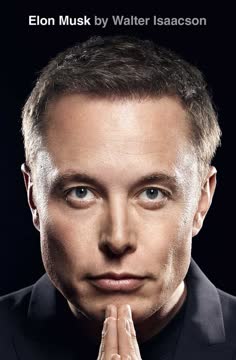
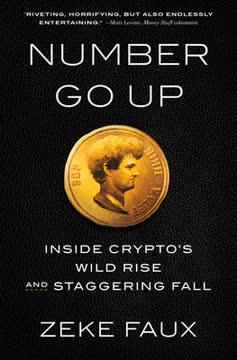

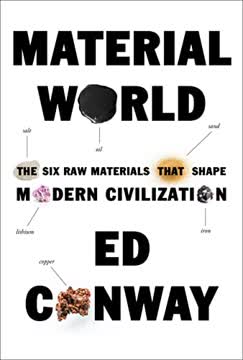



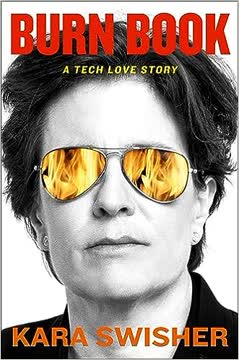
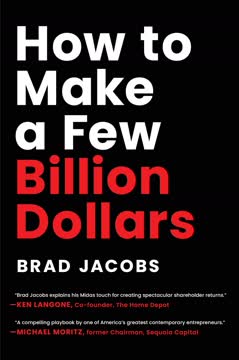

Download PDF
Download EPUB
.epub digital book format is ideal for reading ebooks on phones, tablets, and e-readers.




